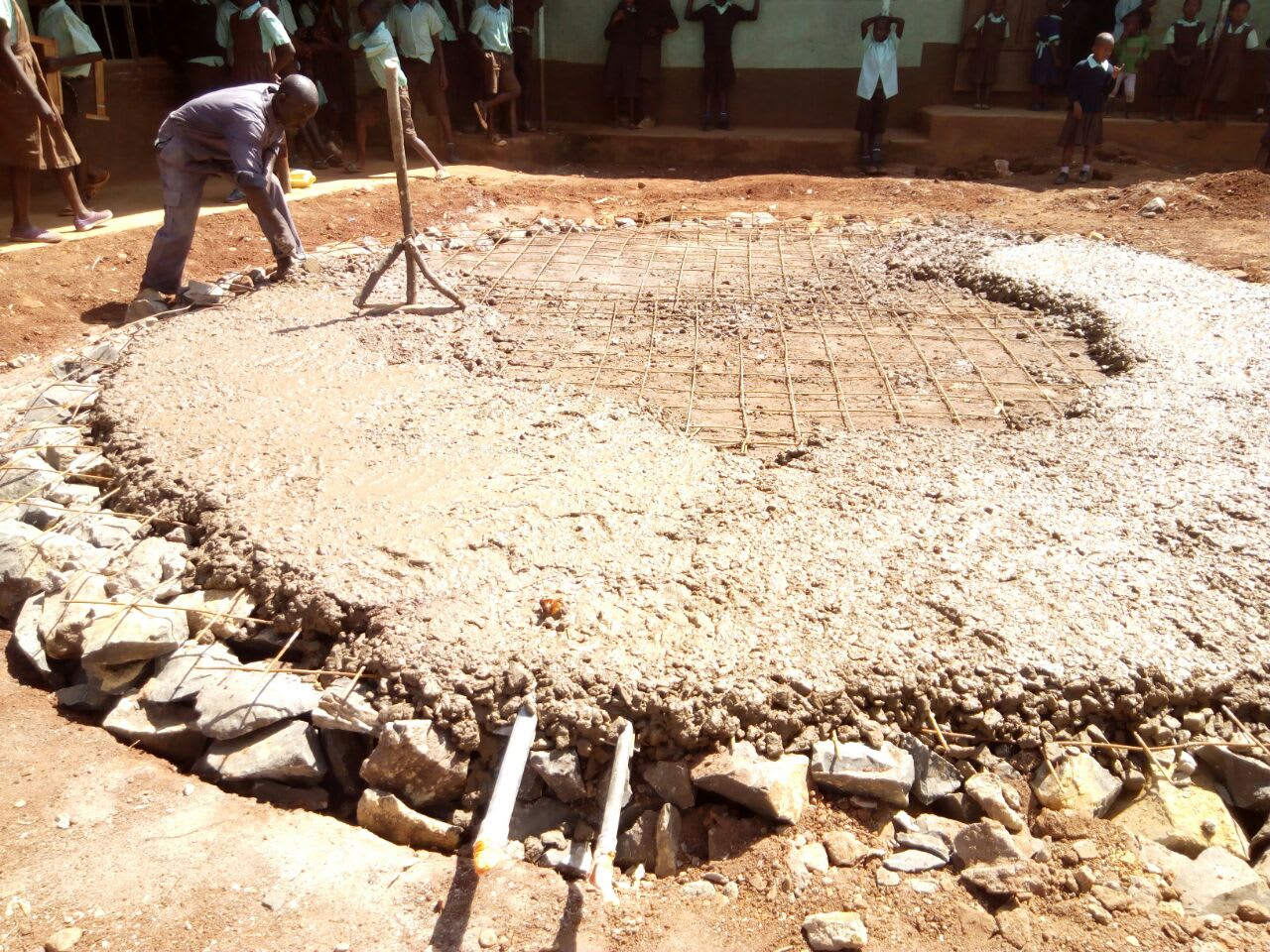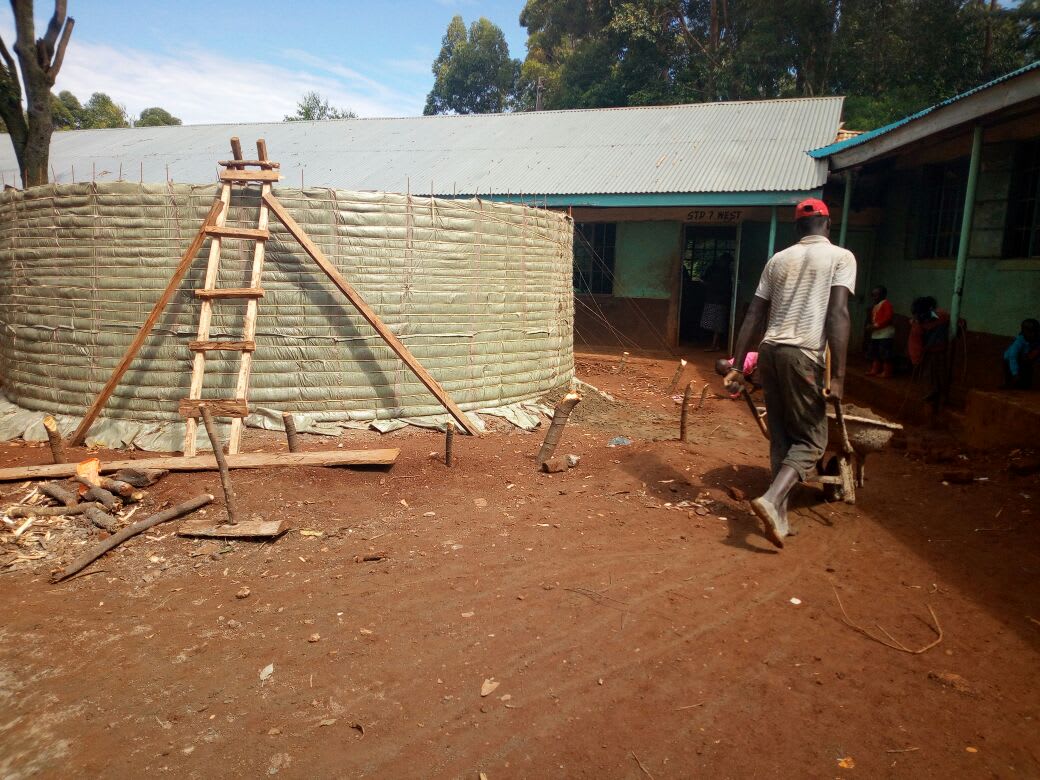This project is a part of our shared program with Western Water And Sanitation Forum (WEWASAFO). Our team is pleased to directly share the below report (edited for clarity, as needed).
Welcome to the School
Walodeya Primary School is a place of study for 670 students taught by 15 teachers. The school also employs three support staff. (Editor's Note: While this many people may have access on any given day, realistically a single water source can only support a population of 350-500 people. This community would be a good candidate for a second project in the future so adequate water is available. To learn more, click here.)
Pupils wake up by 5:30AM to prepare for school. As part of their preparation, they fetch water to use at school. After morning studies from 6AM to 7AM, students jump to cleaning their classrooms and latrines before normal classes start. They begin those classes at 8AM until a tea break, and then lunch at 12:45PM. They go back home to eat and are required back by 2PM. Coming back from lunch, all upper class students are asked to carry water with them. This water is to help them clean their classrooms again in the evening.
Water Situation
The school lacks adequate safe water to serve its huge population. The only form of water on school grounds is a 4,000-liter plastic rainwater tank can hardly meet the school's water demands for a day. As a result, the pupils are asked to carry drinking and cleaning water from home, part of which is also used for hand-washing and cooking purposes.
Pupils are also being sent to an unprotected spring that is about 1 km away from the school. As a result of using water from this contaminated source, the school has had rampant cases of waterborne diseases such as diarrhea, cholera and typhoid among students and staff. Students often miss school as they remain home recovering from these sicknesses. "If you come up with this project, it is really going to help us so much because the children when they are thirsty, they run and drink any water around them and don’t mind if it clean or not," said Deputy Headteacher Stephen Kadega.
The water shortage here has also wasted a huge amount of study time. "Discipline has deteriorated among our pupils because as they walk the long distance in search of water, they waste a lot of time on the way which leads to poor performance in school," added the deputy.
Sanitation Situation
This school has 16 doors of pit latrines within the compound, of which seven are for girls, seven are for boys, and two for teachers. Among these, five are almost full. With so few good latrines and so many students, lines get extraordinarily long during class break. This has caused many pupils, especially boys, to urinate behind the classrooms and bushes. The conditions of this school environment are very poor, and result in increased cases of diarrhea and skin complications among students.
There are no stations set aside for hand-washing, but sometimes the school fills a bowl with water for the students. Garbage is thrown near the latrines, and is burnt when there's too much.
Plans: Hygiene and Sanitation Training and Hand-Washing Stations
Training will be held for two days. The facilitator will use PHAST (participatory hygiene and sanitation transformation), ABCD (asset-based community development), CTC (child to child), lectures, group discussions, and handouts to teach health topics and ways to promote good practices within the school. The CTC method will prepare students to lead other students into healthy habits, as well as kickstart a CTC club for the school. This CTC club will oversee the new facilities, such as hand-washing stations, and make sure they are kept clean and in working condition. The two hand-washing stations will be delivered to the school, and the club will fill them with water on a daily basis and make sure there is always a cleaning agent such as soap or ash.
Plans: Rainwater Catchment Tank
A 50,000-liter rainwater catchment tank will be constructed on school grounds. Teachers, students, and parents will gather the materials needed for this project, including sand, ballast, bricks, and hardcore. This contribution will fuel a sense of responsibility for the school and community to take care of their new facilities. Once materials are mobilized, the WEWASAFO team will arrive to lead the construction effort.
With adequate clean water, the school will have water for drinking, cooking, cleaning, and hand-washing. Students will no longer waste valuable time walking to the spring.
Plans: VIP Latrines
Two triple-door latrines will be constructed, providing three new latrines for each gender. Latrine materials will be mobilized the same way as the tank, ensuring the school feels these facilities are truly theirs. And with a rainwater catchment tank nearby, there will be enough water to keep them clean.
Deputy Headteacher Kadega parted with us by saying, "Water has been a challenge for quite some time. This will really help us so much." School administration and parents are positive that with these new facilities and training, their students’ academic performance will improve. Students will be healthy and empowered to focus on what’s important!



 Rehabilitation Project
Rehabilitation Project


































